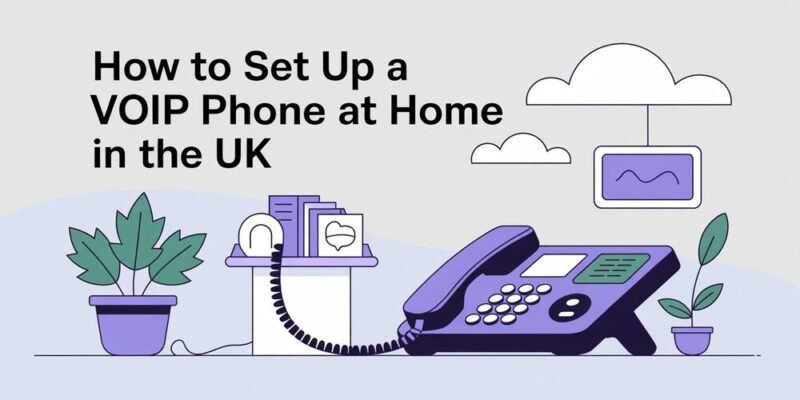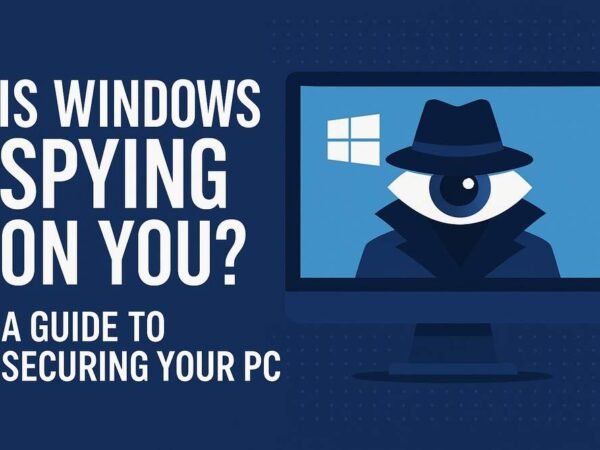Setting up a VoIP phone at home in the UK is easier. Whether you’re working from home, running a small business, or want a more flexible phone system, VoIP (Voice over Internet Protocol) is a great choice. Unlike traditional landlines, VoIP uses your internet connection to make calls, often at a much lower cost. You don’t need to be a tech expert to get started. With the right equipment and a stable internet connection, you can have a VoIP phone up and running in no time. This guide will walk you through everything you need to know—from choosing a provider to making your first call.
What You Need Before Getting Started
Before diving into the setup, you’ll need a few things. First, a reliable broadband connection is a must. Since VoIP relies on the internet, slow or unstable connections can lead to poor call quality. Most UK broadband services are more than capable of handling VoIP calls, but it’s worth checking your speed. Next, you’ll need a VoIP service provider. There are several options available in the UK, including Vonage, BT Cloud Phone, and RingCentral. Some providers offer free plans with basic features, while others include advanced options such as call forwarding and voicemail transcription. You’ll also need a device to make calls. This could be a VoIP phone (which resembles a traditional handset but connects to the internet), a computer with a softphone application, or even your smartphone. If you prefer a traditional feel, investing in a VoIP handset might be the best choice.
Choosing the Right VoIP Provider
Not all VoIP services in the UK are the same. Some are designed for businesses, while others are better for personal use. If you’re setting up VoIP at home, look for a provider that offers straightforward pricing, good customer support, and features that suit your needs. For example, if you make a lot of international calls, check if the provider offers low rates for overseas numbers. If you want to keep your existing landline number, make sure number porting is available. Many UK providers allow you to transfer your old number to your new VoIP service. Another thing to consider is call quality. Some providers utilize more advanced technology to minimize lag and enhance sound clarity. Reading reviews or trying a free trial can help you decide which one works best for you.
Setting Up Your VoIP Phone
Once you’ve picked a provider, it’s time to set up your VoIP phone. If you’re using a physical VoIP handset, the process is straightforward. Plug the phone into your router using an Ethernet cable or connect it via Wi-Fi if it supports wireless. Then, follow the provider’s instructions to register the device. If you’re using a softphone (an app on your computer or smartphone), download the app from your provider’s website or app store. Log in with the credentials they provided, and you’re ready to go. Most apps are user-friendly, with interfaces similar to regular phone dialers. For those who want to use their existing analog phone with VoIP, you’ll need an Analog Telephone Adapter (ATA). This little device converts your old phone’s signal into a digital one that works over the internet. Plug your phone into the ATA, connect the ATA to your router, and configure it as per your provider’s guidelines.
Testing Your VoIP Connection
Before making important calls, test your setup to ensure it is working correctly. Call a friend or use the provider’s test line to check the sound quality. If you hear echoes or delays, try moving closer to your router or reduce other internet usage (such as streaming or downloads) during calls. If problems persist, check your internet speed. VoIP calls don’t need massive bandwidth, but a minimum of 100 kbps per call is recommended. Running a speed test can help identify if your connection is the issue.
Tips for Better VoIP Calls
To get the best experience with your VoIP UK service, follow these tips:
Use a wired connection: Ethernet cables provide more stability than Wi-Fi. Invest in a good headset: If you’re using a computer, a quality headset reduces background noise. Close bandwidth-heavy apps: Video streaming or large downloads can interfere with call quality. Enable QoS on your router: Quality of Service (QoS) settings prioritize VoIP traffic over other data.
Enjoying the Benefits of VoIP
Once everything is set up, you’ll start noticing the advantages of VoIP. Lower call costs, especially for international calls, are a significant advantage. Many providers also include free features, such as voicemail, call waiting, and caller ID, which would typically cost extra with traditional landlines. Another benefit is flexibility. You can take your VoIP number anywhere. Just log in from another device if you’re traveling. No more missing important calls just because you’re not at home. Setting up a VoIP service in the UK is a smart move for anyone looking to save money and enjoy enhanced phone features. With the right provider and a little setup, you’ll wonder why you didn’t switch sooner. So, why wait? Grab your VoIP contact phone, follow these steps, and start making clearer, cheaper calls today!
Do Read: Adverse Media Screening: Everything You Need to Know













